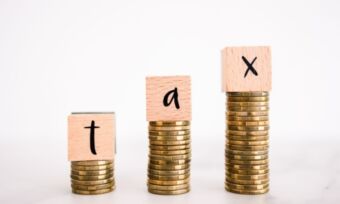Lump sum super withdrawals – what to consider
When you reach the age that you can access your super, you may be able to withdraw the money as a lump sum. But just because you can doesn’t mean you should.

When you reach the age that you can access your super, you may be able to withdraw the money as a lump sum. But just because you can doesn’t mean you should.
Just because you’ve reached your preservation age, this isn’t enough in itself to qualify you to access your super. You also need to make sure you fulfil a condition of release, such as retiring from your job or turning 65.
How a superannuation lump sum works
Once you have access to your super, depending on the rules of your fund, the Australian Taxation Office (ATO) says you may be able to withdraw some or all of your entire super savings as a lump sum. But just because you can doesn’t mean you should. So long as the money stays in your super fund it will normally continue to be invested in order to seek a return, hopefully further increasing your savings. Depending on your circumstances, it may be better for you to withdraw only what you need and leave the rest to grow. Of course, that all depends on your situation, so it’s a good idea to make sure you consider your financial needs now and in the future, and seek some independent advice.
 Online rollover
Online rollover
 Online application
Online application
 Online rollover
Online rollover
 Online application
Online application
 Online rollover
Online rollover
 Online application
Online application
 Online rollover
Online rollover
 Online application
Online application
 Online rollover
Online rollover
 Online application
Online application
Canstar may earn a fee for referrals from its website tables and from Promotion or Sponsorship of certain products. Fees payable by product providers for referrals and Sponsorship or Promotion may vary between providers, website position, and revenue model. Sponsorship or Promotion fees may be higher than referral fees.
On our ratings results, comparison tables and some other advertising, we may provide links to third party websites. The primary purpose of these links is to help consumers continue their journey from the ‘research phase’ to the ‘purchasing’ phase. If customers purchase a product after clicking a certain link, Canstar may be paid a commission or fee by the referral partner. Where products are displayed in a comparison table, the display order is not influenced by commercial arrangements and the display sort order is disclosed at the top of the table.
Sponsored or Promoted products are clearly disclosed as such on the website page. They may appear in a number of areas of the website, such as in comparison tables, on hub pages, and in articles. The table position of the Sponsored or Promoted product does not indicate any ranking or rating by Canstar.
Sponsored or Promoted products table
- Sponsored or promoted products that are in a table separate to the comparison tables in this article are displayed from lowest to highest annual cost.
- Performance figures shown for Sponsored or Promoted products reflect net investment performance, i.e. net of investment tax, investment management fees and the applicable administration fees based on an account balance of $50,000. To learn more about performance information, click here.
- Please note that all information about performance returns is historical. Past performance should not be relied upon as an indicator of future performance; unit prices and the value of your investment may fall as well as rise.
How much will you be taxed on any lump sum withdrawal?
If you do decide to withdraw a lump sum, you should also be aware of the potential tax implications of doing so. While super is taxed favourably, it’s not entirely tax-free.
Your super nest egg may include both tax-free and taxable elements, depending on what contributions were added to your account. Further complicating things, the taxable portion could have its tax paid while in your fund, or it could be taxed when you withdraw it.
The tax-free portion of your super will come from any non-concessional contributions – those made from your savings or take-home pay that has already been taxed – as long as you don’t claim a tax deduction for those contributions.
The taxable portion will usually make up the bulk of your super account balance. This includes any super guarantee contributions from your employer, any salary sacrifice contributions you made and any contributions you claimed a tax deduction on. If your fund has already paid the 15% tax on the taxable portion of your super, it is called the taxed element. Otherwise, if you must pay the tax it is known as the untaxed element. The exact proportions of taxed, untaxed and tax-free super you have is determined by your super fund when you make a withdrawal. The ATO notes that whatever you withdraw will be made up of the same proportion.
The government’s Moneysmart website notes that you generally won’t pay tax on a lump sum withdrawal if you’re aged 60 or over, but you may pay tax if your super fund is untaxed, as is the case for some public sector funds. Your super fund will send you a payment summary showing the components of your lump sum withdrawal that you’ll need to include the untaxed element in your tax return for the applicable year, but not the taxed element or the tax-free component.
Cover image source: Prostock-studio/Shutterstock.com
This article was reviewed by our Editor-in-Chief Nina Rinella before it was updated, as part of our fact-checking process.

Try our Superannuation comparison tool to instantly compare Canstar expert rated options.






